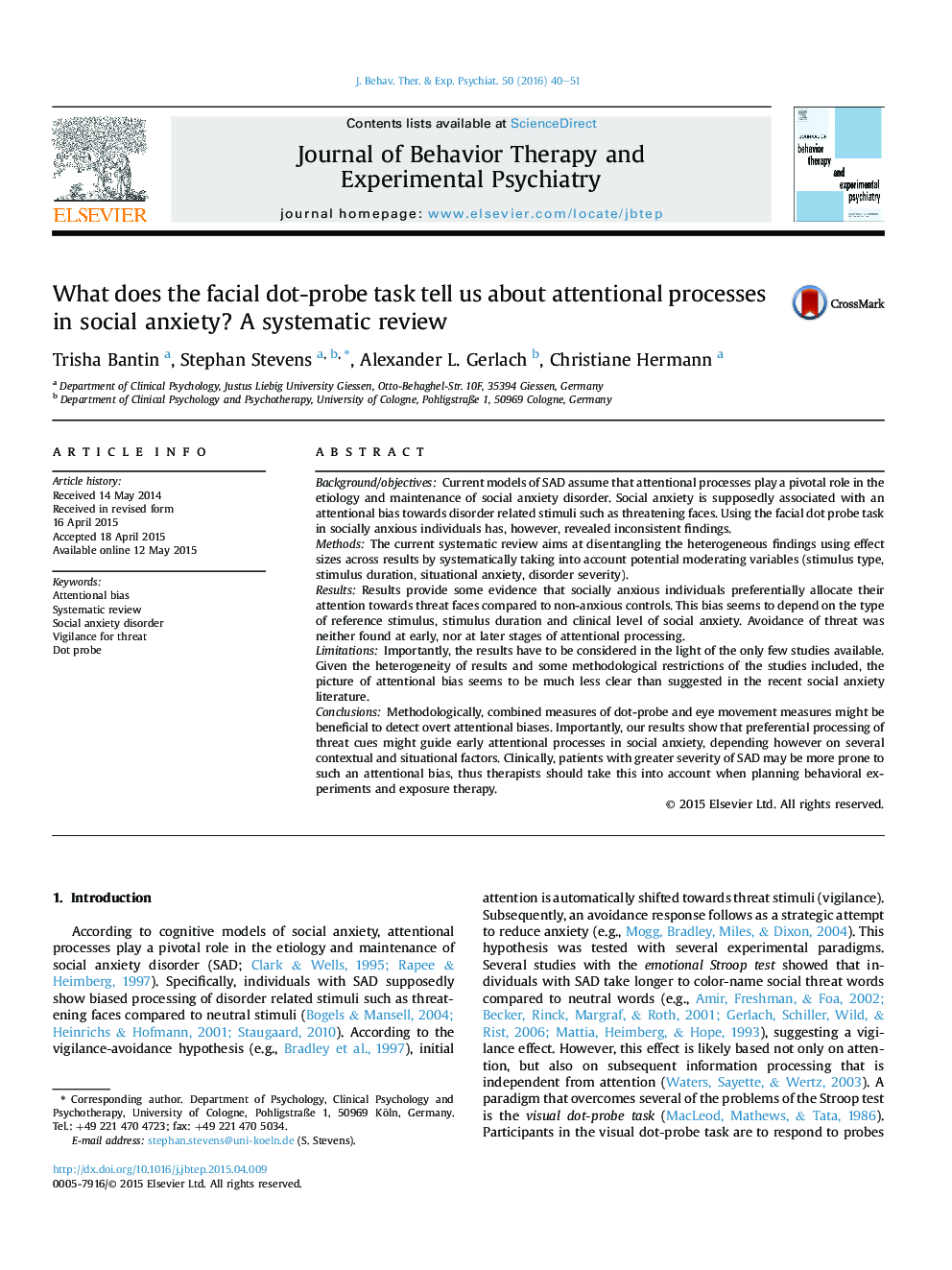| کد مقاله | کد نشریه | سال انتشار | مقاله انگلیسی | نسخه تمام متن |
|---|---|---|---|---|
| 910281 | 1473066 | 2016 | 12 صفحه PDF | دانلود رایگان |
• Conflicting results using the facial dot probe task in social anxiety are summarized.
• Results show marginal support for vigilance for threat faces for early presentations times.
• Study results are heterogeneous and much as clear as suggested by the recent literature.
• Moderators of this bias are presentation time of stimuli, neutral reference stimulus and level of social anxiety.
Background/objectivesCurrent models of SAD assume that attentional processes play a pivotal role in the etiology and maintenance of social anxiety disorder. Social anxiety is supposedly associated with an attentional bias towards disorder related stimuli such as threatening faces. Using the facial dot probe task in socially anxious individuals has, however, revealed inconsistent findings.MethodsThe current systematic review aims at disentangling the heterogeneous findings using effect sizes across results by systematically taking into account potential moderating variables (stimulus type, stimulus duration, situational anxiety, disorder severity).ResultsResults provide some evidence that socially anxious individuals preferentially allocate their attention towards threat faces compared to non-anxious controls. This bias seems to depend on the type of reference stimulus, stimulus duration and clinical level of social anxiety. Avoidance of threat was neither found at early, nor at later stages of attentional processing.LimitationsImportantly, the results have to be considered in the light of the only few studies available. Given the heterogeneity of results and some methodological restrictions of the studies included, the picture of attentional bias seems to be much less clear than suggested in the recent social anxiety literature.ConclusionsMethodologically, combined measures of dot-probe and eye movement measures might be beneficial to detect overt attentional biases. Importantly, our results show that preferential processing of threat cues might guide early attentional processes in social anxiety, depending however on several contextual and situational factors. Clinically, patients with greater severity of SAD may be more prone to such an attentional bias, thus therapists should take this into account when planning behavioral experiments and exposure therapy.
Journal: Journal of Behavior Therapy and Experimental Psychiatry - Volume 50, March 2016, Pages 40–51
